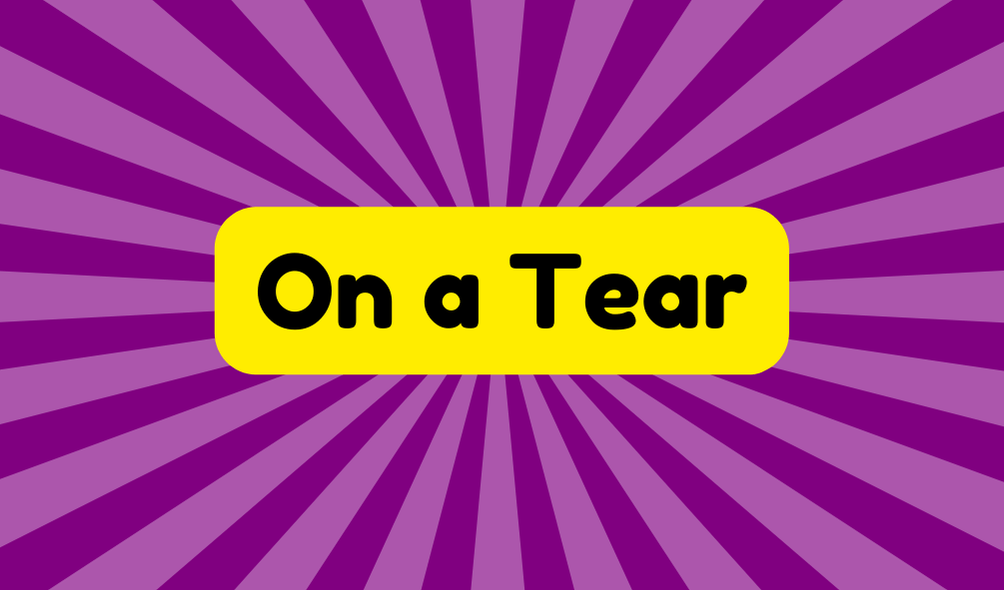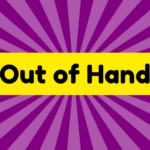When you say someone's "on a tear," it means they're engaged in intense, often impulsive activity. This phrase has roots in informal American speech and reflects our fast-paced culture. You might hear it in contexts like sports, work, or social events. For example, "After she started organizing, she was on a tear, finishing the entire project in one day." While it often highlights positive bursts of productivity, overusing it can dull its impact. It's essential to understand both the benefits and risks of such intensity. So, if you're curious about how to use it effectively, there's more to uncover.
Synonyms
When you hear someone say they're "on a tear," it often means they're engaged in a flurry of activity or experiencing a sudden surge of energy. However, it's crucial to reflect on the exact context. The phrase can be synonymous with various expressions that capture this notion of intensity:
- Active surge: This conveys not just movement but an energetic drive behind it.
- Spontaneous burst: A sudden onset of energy that can lead to remarkable productivity or outcomes.
- Winning streak: Often applied in competitive settings, emphasizing continued success or progress.
Recognizing these synonyms can deepen your understanding of the phrase. While it may sound appealing, the reality often involves pressure that can lead to burnout instead of sustainable momentum. Approach such dynamics with caution.
Example of Sentences
Understanding how to use the phrase "on a tear" in sentences can enhance your communication. This idiom signifies sudden bursts of activity or momentum, making it a valuable addition to your vocabulary. Here are three examples of how you can effectively use it in your own conversations:
- "After the meeting, Sarah was on a tear, completing three projects in less than an hour."
- "The local basketball team is on a tear, winning every game this month!"
- "Once he starts sorting through the garage, he'll be on a tear without stopping for breaks."
Incorporating sentence variety like this showcases the idiom's significance. Using the phrase correctly not only adds flair but can also engage your audience, making your communication more dynamic.
Origin
The idiom "on a tear" has its roots in informal American speech, where it conveys a sense of sudden activity or momentum. This expression is often associated with various contexts, reflecting its versatility in everyday conversation. It highlights the cultural significance of rapid changes—whether in sports, finance, or social behaviors. While many idiomatic expressions tend to remain static, "on a tear" illustrates how language evolves with societal shifts. It captures bursts of energy or unexpected behaviors that resonate with our shared experiences. However, its overuse may dilute its impact, making you question whether it still holds the weight it once did. Understanding its origins can deepen your appreciation for its continued relevance in modern dialogue.
Collocations
In various contexts, "on a tear" pairs well with words that emphasize rapid action or unexpected change. By understanding these collocations, you can better grasp this idiomatic expression and its relevance in an active lifestyle. Here are three examples to reflect on:
- 'Going on a tear' when you engage in a new project.
- 'On a tear' during workouts as you push your limits.
- 'Caught on a tear' with social activities, making spontaneous plans.
Recognizing these connections enhances your grasp of the term. Being "on a tear" embodies energy and urgency, but relying solely on this way of life may lead to burnout. Balancing intensity with rest is vital; an active lifestyle shouldn't ignore the importance of recovery.
How to Use in Everyday Language
Using "on a tear" in everyday conversation can add a colorful flair to your language, making discussions about activities feel more dynamic. You might drop it into casual conversations when discussing your weekend plans or a recent project you tackled enthusiastically. For instance, say, "I've been on a tear cleaning my house!" to convey your sudden burst of productivity. The phrase can also illustrate someone's intense focus, like when a friend completes numerous tasks in one go. However, be cautious; its meaning can shift based on tone and context. Misusing it might confuse listeners or derail the conversation, so be mindful of the everyday situations you're addressing. Ultimately, this idiom can enhance your dialogue if used thoughtfully.
Why Is It Still Relevant Today?
Many people find the phrase "on a tear" still resonates today due to its versatility across various contexts. Its cultural significance is undeniable, appearing in discussions about finance, sports, and personal lives. In today's fast-paced world, you might hear it describing everything from market surges to someone's frantic preparations for a big event. However, while it reflects a sudden burst of energy or achievement, you should be wary of its implications. It's often tied to both positive and negative behaviors, like productivity and reckless drinking. Understanding its modern applications allows you to communicate effectively but also necessitates a critical lens. Using this phrase wisely can offer insight into your observations, but remember that not all "tears" lead to triumph.







